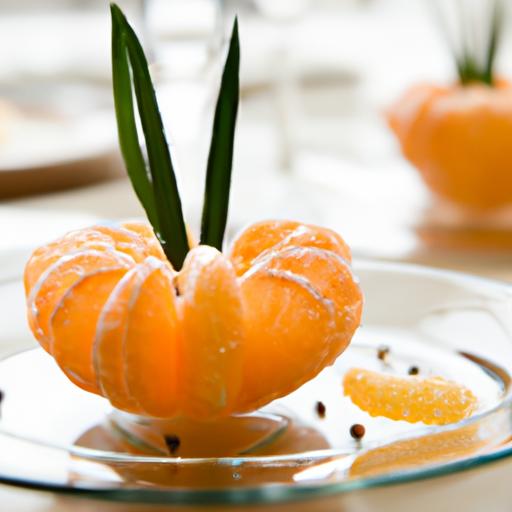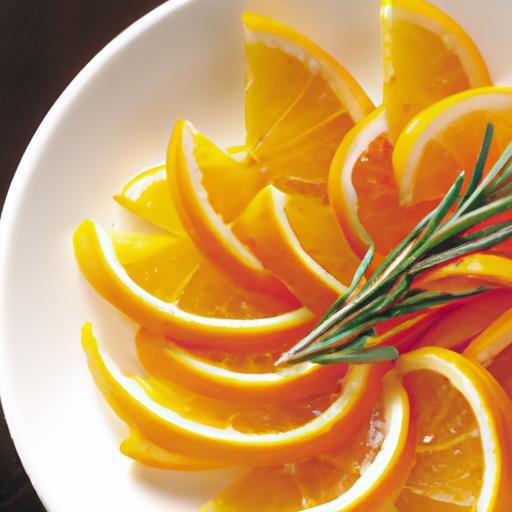Beneath the vibrant peel of every citrus fruit lies a hidden world of aromatic compounds and flavorful magic, waiting to be unlocked. Welcome to the fascinating realm of zesting science, where the simple act of grating a lemon or orange reveals a complex symphony of scents and tastes that can transform the mundane into the extraordinary. In this article, we embark on a sensory journey to unravel the flavorful secrets of citrus, exploring how their fragrant oils and subtle chemical nuances shape everything from gourmet recipes to refreshing beverages. Prepare to see citrus zest not just as a garnish, but as nature’s concentrated burst of sunshine-where science and flavor intertwine in the most delicious way.
Zesting Science: Unlocking Citrus’ Flavorful Power in Your Kitchen
Zesting science breathes new life into your culinary creations by revealing the fascinating chemistry behind citrus zest and how it elevates dishes to extraordinary heights. Understanding how to masterfully extract maximum aroma from citrus peels not only enhances flavor but also awakens the senses with vibrant, fresh notes. Whether paired with desserts, savory dishes, or beverages, zest adds a punch of complexity and brightness that transforms the ordinary into the unforgettable.
Prep and Cook Time
Preparation: 10 minutes | Cook Time: N/A | Total: 10 minutes
Yield
Yields approximately 2 tablespoons of zest, enough to flavor 4-6 servings.
Difficulty Level
Easy – Perfect for home cooks and professionals alike who want to dial up their flavor game.
Ingredients
- 2 large organic lemons or oranges (preferably unwaxed)
- 1 fine Microplane zester or a citrus grater
- Optional: 1 tablespoon sugar for zest syrup or finishing sugar
Instructions
- Wash and dry the citrus thoroughly to remove any impurities or residues, ensuring pure zest.
- Firmly hold the fruit in one hand and gently scrape the outermost colorful layer with the Microplane, avoiding the white pith beneath; pith is bitter and diminishes aroma.
- Collect the zest in a small bowl-its vibrant oils are ready to infuse your creations.
- For maximum aroma, allow the zest to air-dry for 10 minutes before use or lightly toast it in a dry skillet over low heat for 1-2 minutes to amplify flavor.
- If making a zest-infused syrup, combine zest with equal parts sugar and hot water, stirring until dissolved; steep covered for 30 minutes, then strain.
Chef’s Notes on Zesting Science and Flavor Extraction
- Choose fresh, unwaxed citrus for the cleanest and most intense zest aroma.
- Microplane zesters yield the finest shreds, releasing essential oils without bitterness.
- Store zest properly by wrapping tightly in plastic wrap or placing in an airtight container for up to 3 days in the fridge to preserve freshness.
- For longer storage, freeze zest in small portions or dry thoroughly before refrigerating; dried zest imparts a gentle aroma ideal for baking.
- Adding a pinch of salt to zest can help balance bitterness when used in savory recipes.
- Experiment with double zesting: zest two different citrus types (e.g., lemon & lime) to layer complex citrus notes in sauces and drinks.
Serving Suggestions
The magic of zesting science shines brightest when you let citrus zest add sparkle to your dishes and drinks.
- Sprinkle zest finely over creamy desserts like panna cotta or Greek yogurt for a fresh citrus burst.
- Mix zest into salad dressings or seafood marinades to brighten every bite with lively flavor.
- Infuse zest into cocktails-think gin and tonic with a twist of lime zest or warm mulled wine accented with orange zest.
- Garnish baked goods such as lemon pound cake or muffins with an extra zest topping before baking for aroma enhancement.
- Pair zest with fresh herbs like mint, basil, or thyme to create sophisticated flavor layers.
| Nutrient | Per Tablespoon of Citrus Zest |
|---|---|
| Calories | 6 |
| Protein | 0.15g |
| Carbohydrates | 2.2g |
| Fat | 0.03g |
Discover more about the wonders of zest here and dive into scientific insights from ScienceDirect’s Citrus Fruit Overview.

Q&A
Q&A: Zesting Science – Unraveling Citrus’ Flavorful Secrets
Q1: What exactly is zesting, and why is it important in cooking?
A: Zesting is the art of scraping or finely shaving the brightly colored outer peel of citrus fruits, like lemons, limes, oranges, and grapefruits. This thin layer holds aromatic oils packed with intense flavor and fragrance. Unlike the bitter white pith beneath, the zest adds a vibrant, zesty punch that can transform dishes from ordinary to extraordinary – think lively desserts, savory marinades, and aromatic cocktails.
Q2: What’s going on chemically when you zest a citrus fruit?
A: The zest is a treasure trove of volatile oils such as limonene, which gives citrus its signature zing. These oils contain compounds that evaporate quickly, releasing those fresh, bright aromas that can wake up your palate. When you zest, you essentially capture a concentrated citrus essence, much like an aromatic oil bottling the sunny spirit of the fruit.
Q3: Are all citrus zests created equal?
A: Not quite! Different citrus fruits vary in zest intensity, oil composition, and taste profile. For example, lemon zest tends to be sharp and tangy with a clean brightness, while orange zest is sweeter and more floral. Grapefruit zest often carries a bittersweet complexity. Plus, the freshness and ripeness of the fruit can dramatically influence how aromatic and flavorful the zest is.
Q4: What’s the best tool for zesting, and does it affect the flavor?
A: Tools range from microplanes and zesters to vegetable peelers and knives. A microplane grater is prized for its ability to create fine, fluffy zest that releases more oils into your dishes quickly. Using the right tool prevents you from scraping into the bitter pith and ensures you get that pure, flavorful zest. The technique, too, matters – gentle strokes preserve the delicate oils better than harsh scrapes.
Q5: Can zesting alter the nutritional value of dishes?
A: While zest isn’t a major source of macronutrients, it does contribute trace amounts of fiber, vitamin C, and antioxidants like flavonoids. These antioxidants are linked to various health benefits, such as reducing inflammation and supporting the immune system. So beyond flavor, zest adds a subtle nutritional boost and a hint of nature’s bright complexity.
Q6: How can zesting change the flavor profile of a dish?
A: Zest adds a multidimensional punch – it can brighten a heavy stew, add a fresh twist to baked goods, or balance a rich sauce with its lively oils. It acts like a flavor amplifier, awakening and marrying other ingredients without overpowering them. The zest’s essence invites your taste buds to dance, adding a sun-kissed sparkle that’s impossible to replicate with juice alone.
Q7: Is zesting an ancient culinary tradition or a modern twist?
A: Zesting is an age-old technique tracing back centuries across global cuisines. From Mediterranean lemon-infused dishes to Asian citrus garnishes, the bright peel has long been prized. What’s “modern” is our scientific understanding – today we unravel the molecular magic behind those zingy flavors, crafting dishes that highlight zest with precision and creativity.
Q8: Any tips for storing zest or preserving its flavor?
A: Fresh zest is best used right away for that peak aromatic burst. If you need to store it, keep it in an airtight container in the fridge and use within a day or two. For longer storage, freeze zest in small portions; freezing locks in the oils surprisingly well. Just remember that dried zest loses much of its fragrance, so fresh or frozen is a zest-lover’s best bet!
Zesting science reveals a delicious secret: the citrus peel is not just a garnish but a powerhouse of flavor and aroma. With the right technique and appreciation, you can unlock the sunny soul of citrus to elevate your culinary creations to new heights.
The Conclusion
As we peel back the layers of citrus zesting, we uncover not just a simple culinary technique, but a vibrant symphony of science and flavor awaiting every curious palate. From the aromatic oils bursting beneath the skin to the intricate chemistry that elevates a dish from ordinary to extraordinary, zesting invites us to explore the hidden zest of life itself. So next time you reach for that bright, fragrant peel, remember: you’re harnessing a powerful blend of nature’s art and science, one fragrant twist at a time.


